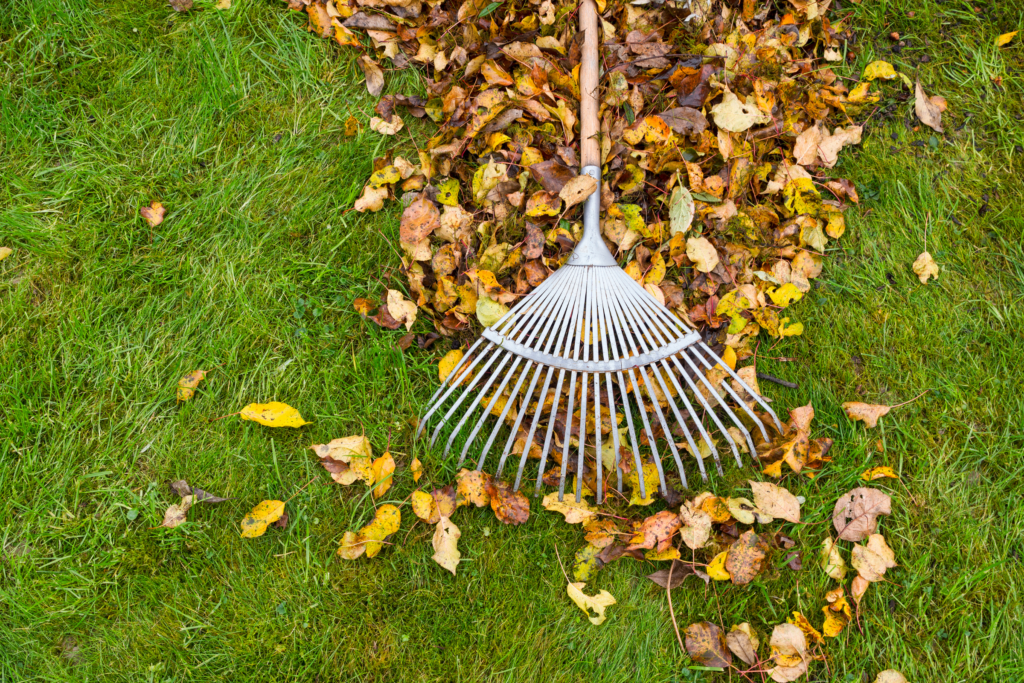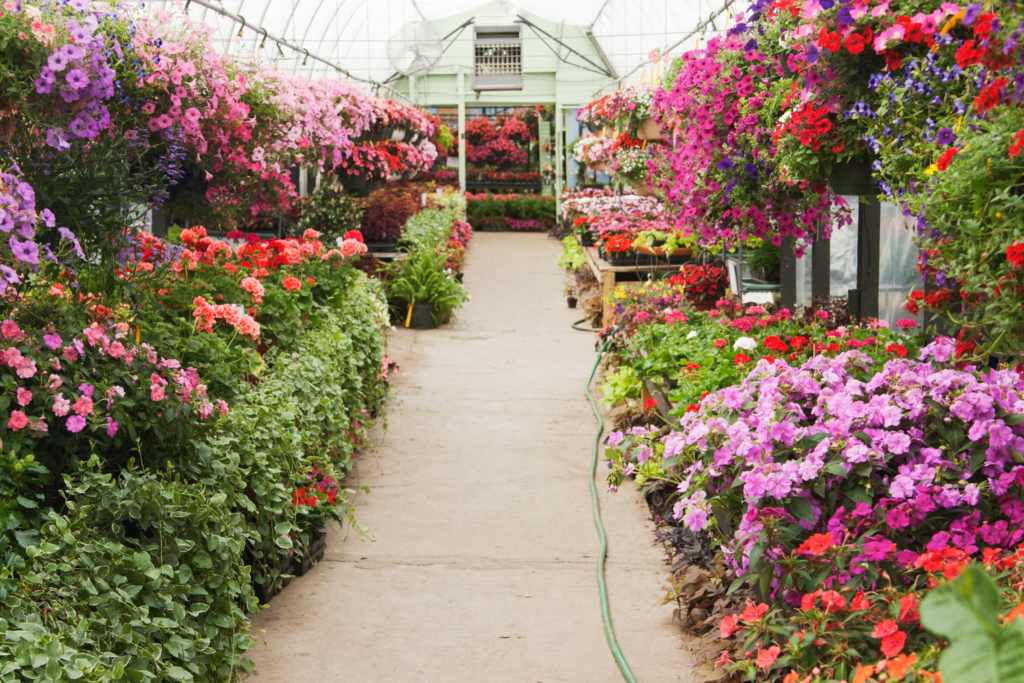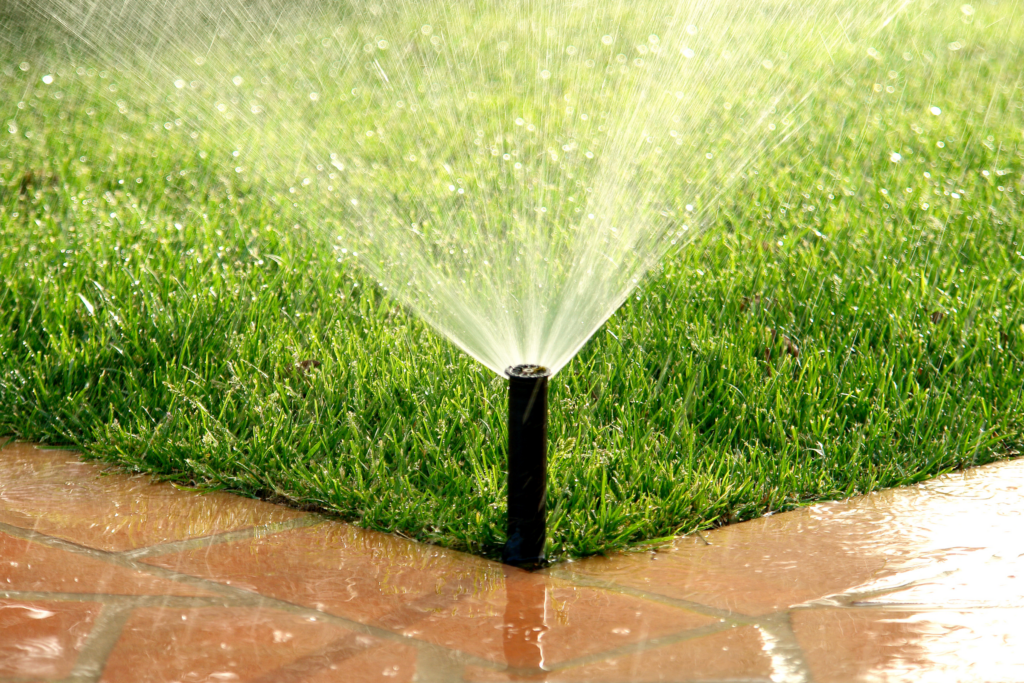6 Landscaping Tasks To AVOID in September – Don’t Make These Mistakes!
As autumn takes hold and leaves begin to fall, late September is the perfect time to take care of your landscaping needs – but, not all of them!
This article will discuss seven mistakes that homeowners often make in late September landscaping so you can avoid them and keep your outdoor space looking its best:
- Over-Pruning Certain Plants
- Ignoring Lawn Care
- Planting Tender Annuals
- Overwatering
- Forgetting About Pests
- Neglecting Soil Health (Fertilizing)
To help bring all of the information together, here is a helpful table of everything we cover in this article!
| Landscaping Aspect | Common Mistakes | Recommendations |
|---|---|---|
| Pruning Plants | Over-pruning certain plants | – Prune after blooming (specifically for Azaleas & Rhododendrons) |
| – Only remove dead, diseased, or damaged branches | ||
| – Different plants have distinct pruning requirements | ||
| Lawn Care | Ignoring basic lawn maintenance | – Consider yard size for care needs |
| Mowing grass too short | – Don’t remove more than one-third of the grass blade | |
| Poor maintenance of tools | – Regularly clean and inspect tools | |
| Overwatering | – Water deeply but infrequently | |
| Poor positioning of raised beds | – Avoid positioning that blocks sunlight or irrigation | |
| Planting Annuals | Planting unsuitable annuals | – Research plants for light requirements, soil preferences, and drainage needs |
| Planting on extreme temperature days | – Monitor weather and choose ideal day for planting | |
| Improper spacing of plants | – Follow recommended spacing guidelines | |
| Forgetting about frost | – Avoid planting right before a frost | |
| Overwatering | Not monitoring soil moisture | – Avoid watering when soil is damp or muddy |
| Using wrong irrigation system | – Choose and properly install suitable system | |
| Watering at the wrong time of day | – Prefer early morning or late afternoon watering | |
| Pest Control | Ignoring signs of infestation | – Look for damaged leaves, chewed stems, holes, etc. |
| Not maintaining a clean garden | – Regularly prune and dispose of fallen leaves | |
| Choosing non-resistant plants | – Opt for native or disease-resistant plants | |
| Soil Health | Not testing soil | – Check soil pH and nutrient composition |
| Poor drainage | – Avoid soil compaction | |
| Not using compost and mulch | – Incorporate compost and mulch for nutrients and moisture retention | |
| Ignoring climate effects on soil | – Adjust maintenance based on the prevailing climate | |
| Overcrowding plants | – Properly space plants considering their mature size |
Over-Pruning Certain Plants
When it comes to maintaining a healthy and beautiful landscape in late September, one of the most common mistakes you might make is over-pruning certain plants. While pruning is essential for growth, going overboard can cause more harm than good to your trees and shrubs.
Let’s start with azaleas and rhododendrons, which are frequently victims of overzealous pruning. You should be cautious when trimming these plants, as removing too many branches can lead to weaker, less vigorous growth. As a result, they may become more susceptible to pests and diseases. The best time to prune them is right after they’ve finished blooming, typically in early summer.
| Plant Type | Pruning Mistake | Ideal Pruning Time | Pruning Tips |
|---|---|---|---|
| Azaleas & Rhododendrons | Over-pruning; removing too many branches | After blooming (typically early summer) | Only remove dead, diseased, or damaged branches. Avoid excessive pruning to prevent weaker growth. |
| Fruit Trees | Over-pruning leading to stress | Varies; typically late winter to early spring | Regular pruning needed for health and fruit production. Only prune essential branches. |
| Berry Bushes | Over-pruning impacting fruit production | Varies; typically late winter to early spring | Regular pruning helps in fruit production. Avoid excessive cuts. |
Also, remember that not all trees and shrubs require the same amount of pruning. Some plants, like fruit trees and berry bushes, need regular pruning to remain healthy and produce more fruit. However, over-pruning them may cause stress and impact fruit production the following season.
A good rule of thumb is to only remove dead, diseased, or damaged branches during routine pruning. In late September, be particularly careful with your plants to ensure they remain healthy and well-shaped going into the cooler months. Don’t forget that different plants have distinct pruning requirements; always research the proper timing and techniques for your specific plant species.
Ultimately, the key is to be gentle and keep the plant’s natural form in mind when you’re pruning. Avoid cutting back too much or too often, and ensure that your plants are properly cared for, which will contribute to a more attractive and healthier landscape.

Ignoring Lawn Care
Caring for your yard in late September is crucial for maintaining its health and appearance. Don’t neglect the basics, like mowing and irrigation. Let’s dive into some common mistakes and how you can avoid them.
For starters, always consider the size of your yard before undertaking any lawn care. A larger yard may require more time and resources. Keep track of the mower blade height to avoid cutting the grass too short. Mowing too low can stress the grass and make it more susceptible to disease and pests. As a rule of thumb, never remove more than one-third of the grass blade at a time.
Maintenance plays a significant role in late September landscaping. Regularly cleaning and inspecting your tools like lawnmowers, trimmers, and irrigation systems ensures they’re in good working condition. Poor maintenance can lead to uneven cuts, damaged grass, and poorly functioning sprinklers.

Irrigation is another vital aspect of lawn care, particularly in late September. Avoid overwatering your grass, as this can lead to shallow root growth and increased susceptibility to disease. Instead, water deeply but infrequently. This encourages deeper root development and can better withstand the upcoming colder months.
Raised beds can be an attractive addition to your landscape during this time. However, be mindful of how they may affect your lawn. Raised beds might cast shadows that deprive grass of sunlight, inhibit irrigation, or impact mower access. Consider these factors while planning and positioning your raised beds to prevent any adverse effects on your lawn.
By paying attention to these essential lawn care aspects in late September, you’ll help ensure a healthier and better-looking yard throughout the year. Remember, consistent care is key for a thriving landscape.
| Lawn Care Aspect | Common Mistakes | Recommendations |
|---|---|---|
| Yard Size | Not considering the size for care needs | Allocate appropriate time and resources depending on yard size |
| Mowing | Cutting the grass too short; using dull blades | Never remove more than one-third of the grass blade; maintain and inspect mowing tools regularly |
| Maintenance | Neglecting tools and equipment | Clean and inspect tools like mowers and trimmers regularly |
| Irrigation | Overwatering; shallow watering | Water deeply but infrequently; ensure systems are functioning well |
| Raised Beds | Placing in ways that affect grass (shade, irrigation) | Consider positioning to prevent blocking sunlight, mower access, or irrigation |
| General Recommendation | Inconsistent care | Regular maintenance and attention to yard details in late September |
Planting Tender Annuals
When it comes to late September landscaping, it’s essential to avoid some common mistakes when planting tender annuals. These types of plants typically last only one season and can be more sensitive to changing temperatures and conditions.
First, make sure you choose the right plants for your garden. Research the specific annuals you want to plant, taking into account their light requirements, soil preferences, and drainage needs. Planting annuals that aren’t suited for your garden’s environment will often lead to disappointment and wasted efforts.
In late September, pay extra attention to the weather in your area. Cooler temperatures can be a significant factor in the success of your annuals. Plant your delicate annuals on a day when the weather is ideal, not too hot or too cold. This will give them the best chance at survival.

Spacing your annual plants properly is also vital for their growth and overall health. Be sure to follow the recommended spacing guidelines for each specific plant you’re planting. This will ensure they have enough room to grow and receive the necessary sunlight, nutrients, and water.
It’s worth mentioning that adding a layer of mulch around the base of your annuals can help regulate soil temperature and moisture. This can be particularly helpful in late September when temperatures can be more unpredictable.
Remember that timing is crucial when planting tender annuals in late September. You should avoid planting them right before a frost, as colder temperatures can damage or kill these delicate plants. Keep an eye on the local weather forecast and plan accordingly.
By avoiding these common mistakes when planting tender annuals in late September, you can help increase the chances of a thriving and beautiful garden. Just be sure to properly research, select, and care for your plants to make the most out of your landscaping efforts.
| Planting Aspect | Common Mistakes | Recommendations |
|---|---|---|
| Plant Selection | Choosing plants without researching | Research light requirements, soil preferences, and drainage needs for each specific annual |
| Weather Considerations | Planting on extreme temperature days | Monitor weather; choose a day that’s neither too hot nor too cold for planting |
| Plant Spacing | Planting too close together | Follow recommended spacing guidelines to ensure plants have enough room for growth and access to sunlight, nutrients, etc. |
| Mulching | Neglecting to mulch around annuals | Add a layer of mulch to regulate soil temperature and moisture, especially during unpredictable September temperatures |
| Timing | Planting just before a frost | Check the local weather forecast to avoid planting right before colder temperatures that could harm delicate annuals |
| General Recommendation | Not giving annuals the best conditions for growth and health | Ensure the right environment, care, and attention to help your tender annuals thrive in late September |
Overwatering
It’s easy to think that more water is always better for your plants and lawn, but overwatering can cause a range of issues. Late September is a crucial time to ensure your landscaping gets just the right amount of water. Here are some key points to keep in mind to avoid overwatering-related problems.
Monitoring soil moisture is essential in achieving a healthy balance of water. Overwatering can lead to poor drainage, which in turn can cause root rot, fungal diseases, and a weakened root system. To avoid this, make sure you’re not watering when the soil is already damp or muddy.
Picking the right irrigation system is crucial. The wrong sprinkler system can cause overwatering, as well as uneven distribution of water. It’s essential to choose and properly install a system that caters to your landscaping needs.

Monitor the weather to achieve the optimal watering schedule. Watering when it’s sunny or windy can lead to quick evaporation, leaving your plants thirsty again. Watering at night is also discouraged, as damp conditions can promote diseases. Instead, aim for early morning or late afternoon watering, when the sun is less intense.
Finally, consider the specific needs of your plants. Different types of plants and grasses require different amounts of water. Make sure you’re aware of the requirements for each area of your lawn or garden to ensure you’re providing the right amount of hydration without going overboard.
Forgetting About Pests
Late September is a crucial time to address pest issues in your landscaping. As the season changes, pests and diseases may become more active, potentially causing damage to your plants and garden.
One common mistake is ignoring the signs of pest infestations. Keep an eye out for damaged leaves, chewed stems, or holes in the ground near your plants. If you spot any of these indicators, take action to protect your garden from further harm.
Pests can come in various forms, including insects, rodents, and even larger animals. For instance, deer may nibble on your plants, leaving them damaged and unsightly. To deter them, consider investing in deer-resistant plants or installing physical barriers, like fencing.
Another mistake is failing to maintain a clean and healthy garden. This can encourage the growth of fungi and bacteria, leading to diseases that can spread throughout your landscaping. Regularly pruning dead or diseased branches and disposing of fallen leaves can help mitigate these risks.
It’s also essential to choose the right plants for your garden, taking into consideration their resistance to pests and diseases. Selecting plants native to your area or known for being disease-resistant can make a significant difference in your garden’s overall health.
Remember, taking the time to address pests and diseases in the late September landscape can save you from dealing with severe problems later on. Be proactive and maintain a healthy garden throughout the fall season.
| Aspect | Common Mistake | Recommendation |
|---|---|---|
| Signs of Infestation | Ignoring signs of pest infestations | Look for damaged leaves, chewed stems, or holes. Act promptly upon spotting these signs. |
| Types of Pests | Not recognizing various pests | Pests can be insects, rodents, or larger animals like deer. Understand the types of pests in your area. |
| Dealing with Large Animals | Not taking preventive measures against large animal intruders | Consider deer-resistant plants or physical barriers like fencing to deter them. |
| Garden Cleanliness | Failing to maintain a clean garden | Regularly prune dead or diseased branches and dispose of fallen leaves to prevent fungi and bacteria growth. |
| Plant Selection | Choosing plants without considering pest and disease resistance | Opt for plants native to your area or those known for disease-resistance to enhance garden health. |
| General Consideration | Neglecting pest and disease management in late September | Be proactive; addressing issues now can prevent severe problems later. Maintain a healthy garden in fall. |
Neglecting Soil Health
Caring for your soil is an essential part of late September landscaping. To avoid common mistakes, start by testing your soil. Knowing its pH level and nutrient composition helps you make informed decisions about fertilizers and amendments.
When tending to your soil, remember the importance of drainage. Proper water flow prevents root rot and encourages healthy plant growth. Avoid compacting the soil too much – it impedes drainage and makes it difficult for plant roots to penetrate.
Incorporate compost and mulch into your landscaping routine. Compost adds nutrients and microorganisms to the soil and promotes a healthy ecosystem. Mulch retains moisture, regulates temperature, and suppresses weeds. Plus, it gives your landscape a clean, finished look.
Keep in mind the climate and how it affects soil health. Dry and hot late September weather may require more frequent watering, while colder climates demand protection against frost. Adjust your maintenance accordingly to maintain optimal soil conditions.
Lastly, avoid overcrowding your plants. Giving them enough space promotes good airflow, reduces competition for nutrients, and minimizes the risk of disease spreading. Proper plant placement, considering their mature size, is crucial to maintaining healthy soil and a thriving landscape.
Let Us Know How We’re Doing!
Did this expertly prepared resource answer your question?
Do you have another question about home maintenance, home improvement projects, home appliance repair, or something else?
Get more information, send in questions and keep the discussion going by contacting the I’ll Just Fix It Myself company customer service team at at 1-800-928-1490 or Email us at [email protected]
